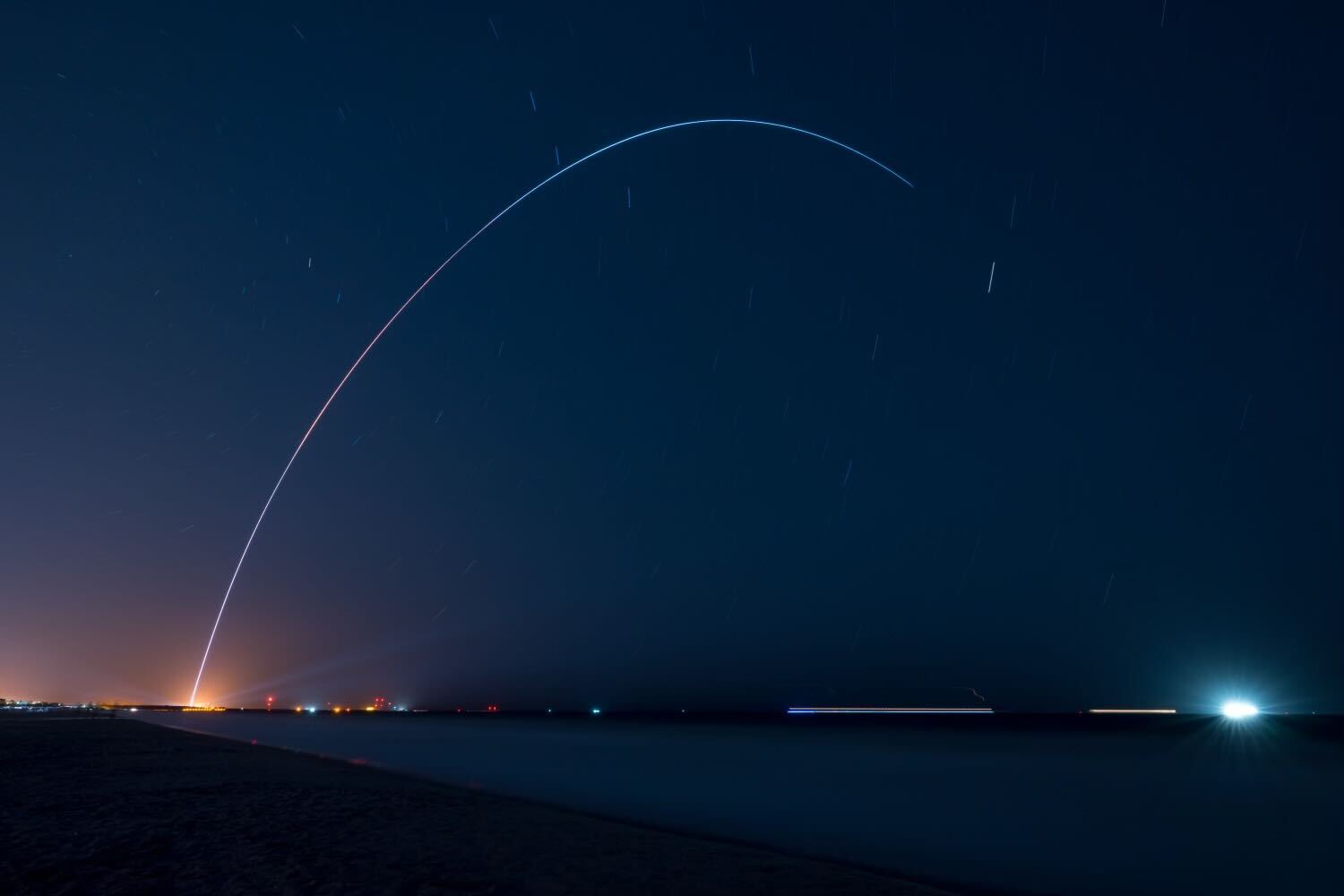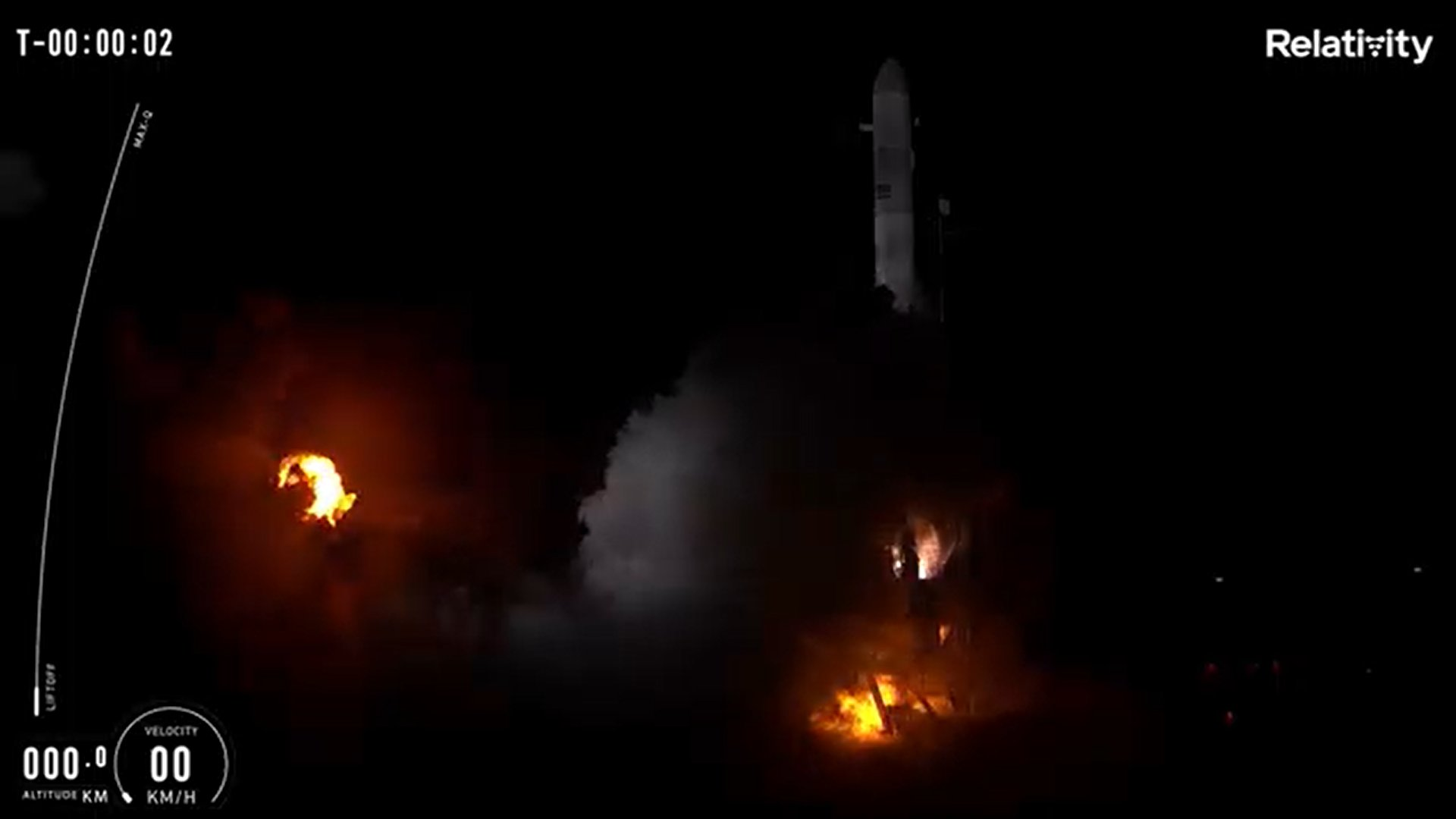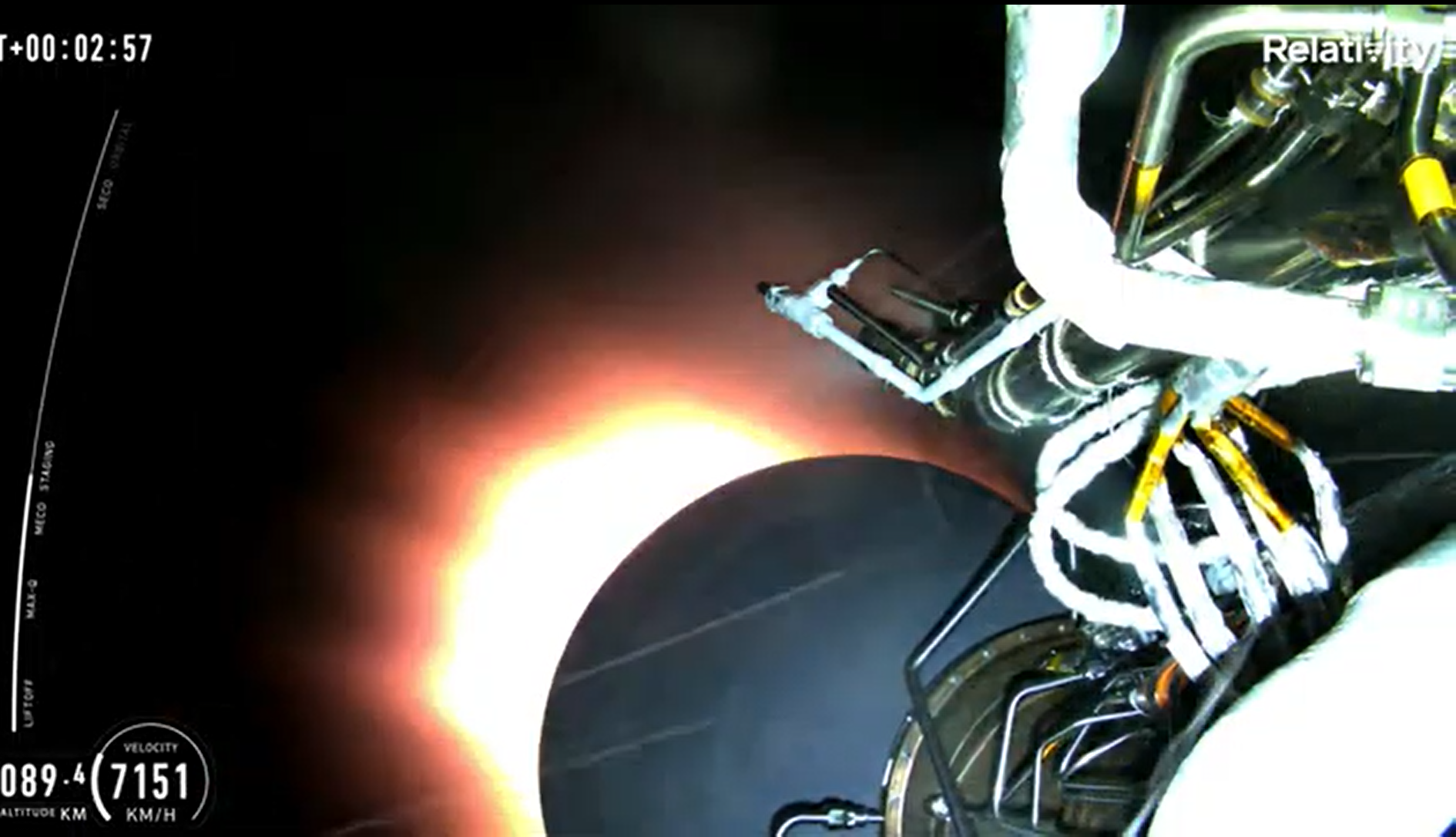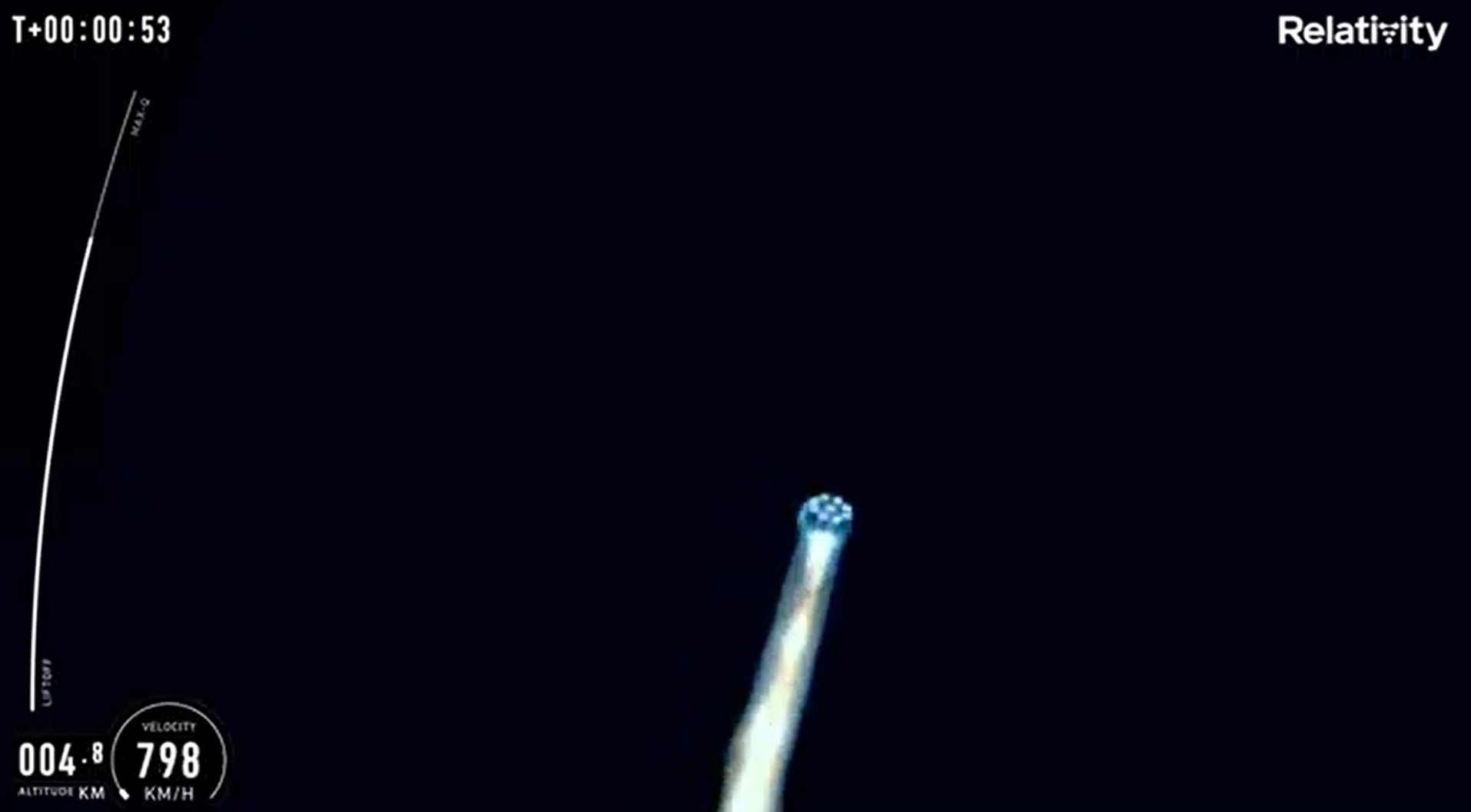Relativity Space launches world's first 3D-printed rocket on historic test flight, but fails to reach orbit
The world's first 3D-printed rocket didn't earn its wings during its launch debut late Wednesday (March 22), but it did notch some important milestones.
The Relativity Space rocket, called Terran 1, lifted off from Launch Complex 16 at Florida's Cape Canaveral Space Force Station at 8:25 p.m. EST (0025 GMT on March 23), kicking off a test flight called "Good Luck, Have Fun" (GLHF).
Terran 1 performed well initially. For example, it survived Max-Q — the part of flight during which the structural loads are highest on a rocket — and its first and second stages separated successfully. But something went wrong shortly thereafter, at around three minutes into the flight, when the rocket failed to reach orbit.
"No one's ever attempted to launch a 3D-printed rocket into orbit, and, while we didn't make it all the way today, we gathered enough data to show that flying 3D-printed rockets is viable," Relativity Space's Arwa Tizani Kelly said during the company's launch webcast on Wednesday night.
"We just completed a major step in proving to the world that 3D-printed rockets are structurally viable," she added.
Video: Relativity Space CEO Tim Ellis on 3d-printed rockets and the future


Indeed, Relativity Space is likely celebrating at the moment. Rockets rarely perform perfectly on their first-ever liftoff; Japan's new H3 rocket failed during its debut flight earlier this month, for example. And Relativity Space co-founder Tim Ellis said before launch that getting through Max-Q was "the key inflection" for the GLHF mission.
Breaking space news, the latest updates on rocket launches, skywatching events and more!
"This will essentially prove the viability of using additive manufacturing tech to produce products that fly. We already effectively did this in ground testing, pushing and prodding well above this max stress successfully on both stages in a simulated worst-case flying environment, and have tested over 12,000 seconds of engine hot fires across dozens of articles — so I think we've done this already, but in flight of course is the most visceral proof," Ellis tweeted on March 7.
Relativity Space, which Ellis and fellow Blue Origin alum Jordan Noone founded in 2016, aims to launch relatively small payloads with the expendable, two-stage Terran 1. The 110-foot-tall (33 meters) rocket is capable of delivering up to 2,756 pounds (1,250 kilograms) to low Earth orbit, according to Relativity Space, which is selling Terran 1 launches for $12 million apiece.
But the rocket didn't carry an operational payload on GLHF — just a 3D-printed ring that serves as a memento. (This first Terran 1 rocket was about 85% 3D-printed material by mass, but the company aims to get that number up to about 95% on future vehicles.)
Relativity Space will build off GLHF's milestones, if all goes according to plan. The company has already inked $1.65 billion's worth of customer launch contracts.
Some of that money booked Terran 1 flights, but the vast majority, Ellis said in another March 7 tweet, is earmarked for launches of the Terran R. That latter rocket is a bigger, more powerful and reusable vehicle that Relativity Space plans to start flying as early as next year.
The 216-foot-tall (66 m) Terran R, which is also built via 3D printing, will be capable of lofting up to 44,000 pounds (20,000 kg) to LEO. The rocket's development will be aided considerably by GLHF, according to Relativity Space.
"Terran 1 serves as a pathfinder and development platform on our path to Terran R production," company representatives said in a prelaunch email to Space.com. "Terran 1 has served us exceedingly well in this capacity leading up to our first launch, and we anticipate additional key learning will come from launch day as well."
Relativity Space aimed to make history in multiple ways on GLHF. Terran 1 is fueled by liquid methane and liquid oxygen, for example, and it tried to become the first such "methalox" rocket to reach orbit (in addition to the first 3D-printed vehicle to do so).
The methalox combo is favored by Mars exploration advocates, as both methane and oxygen can be sourced locally on the Red Planet. For example, SpaceX's giant next-gen Starship vehicle, which Elon Musk believes could make Mars colonization economically feasible, is a methalox rocket as well..
Wednesday's launch was Relativity Space's third try at a debut liftoff for the Terran 1. An attempt on March 8 was scrubbed due to issues with fuel temperatures in the rocket's upper stage, and another on March 11 was foiled by weather and range safety delays and two separate aborts.
Space.com writer Elizabeth Howell contributed to this story.
Mike Wall is the author of "Out There" (Grand Central Publishing, 2018; illustrated by Karl Tate), a book about the search for alien life. Follow him on Twitter @michaeldwall. Follow us on Twitter @Spacedotcom or Facebook.

Michael Wall is a Senior Space Writer with Space.com and joined the team in 2010. He primarily covers exoplanets, spaceflight and military space, but has been known to dabble in the space art beat. His book about the search for alien life, "Out There," was published on Nov. 13, 2018. Before becoming a science writer, Michael worked as a herpetologist and wildlife biologist. He has a Ph.D. in evolutionary biology from the University of Sydney, Australia, a bachelor's degree from the University of Arizona, and a graduate certificate in science writing from the University of California, Santa Cruz. To find out what his latest project is, you can follow Michael on Twitter.


